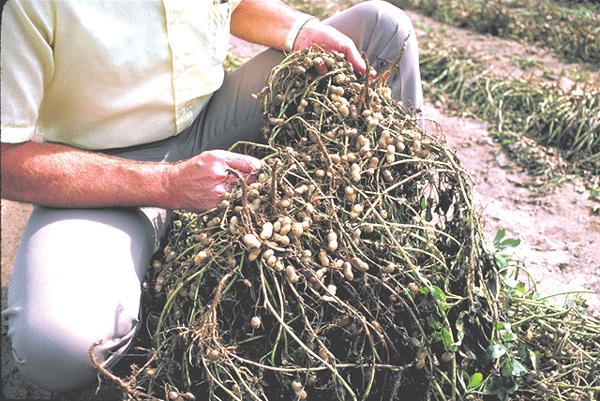
• The key to organic peanuts is careful timing at planting and frequent mechanical cultivation during production.• There is a huge demand for organic peanuts. There is no reason why the Southeast can’t get in the game.• The biggest road block to organic peanut production is the lack of certified organic shellers.
May 3, 2011

Growing organic peanuts throughout the Southeast, although a challenge, is no longer impossible.
The key is careful timing at planting and frequent mechanical cultivation during production.
Six years of on-farm research and university experiment stations trials in Georgia and the Carolinas, funded by Southern Sustainable Agriculture Research and Education grants, show that farmers can grow organic peanuts and yield a respectable 3,000 pounds per acre or more.
It takes some careful planning and intensive production practices to make it work, said Mark Boudreau, a public service assistant with University of Georgia Cooperative Extension and one of the project leaders.
“Peanuts are practically synonymous with the Southeast. Over 80 percent of the peanut production comes from the region, but when it comes to organic, nearly all of the production is in Texas and New Mexico,” said Boudreau, a member of the UGA College of Agricultural and Environmental Sciences Department of Biological and Agricultural Engineering.
“There is a huge demand for organic peanuts. There is no reason why the Southeast can’t get in the game.”
Boudreau said that growing organic peanuts in the Southeast poses two challenges: Control of insects, diseases and weeds during production and the lack of infrastructure in the region to shell organic peanuts and sell on a large scale to processors.
The team of researchers and farmers in Georgia and the Carolinas conducted on-farm trials and controlled experiments to develop a system for organic peanut production. They focused on pest management and weed control.
They found that insects could be controlled through irrigation. Thrips would require foliar sprays of an organic insecticide, spinosad, when needed. Post-establishment diseases could be managed via resistant varieties and some organic sprays if necessary.
“That was the easy part,” Boudreau said. “The overwhelming limitation was weed control. When the crops failed, it was generally because of weeds.”
Boudreau said one way to overcome some weed pressure is to get a good stand of organic peanuts quickly established long before weeds even show up.
“A farmer needs to know his farming system. He needs to know the land and the weather,” said Boudreau. “The saying goes that if you see a weed, then it’s already too late.”
Ultimately, the project investigators recommended intensive mechanical cultivation as the key to controlling weeds in organic peanut fields.
Flex tine cultivator works well
“Particularly, one piece of equipment seems to do the trick — a flex tine cultivator,” said Boudreau. “Use it before the peanuts emerge and every few days afterward for about three weeks or until the canopy closes.”
When set at the right speed and tine height, the cultivator scratches the soil surface exposing weed seeds, which dries them out.
The project, “Exploiting the Organic Peanut Market: Design of Production Systems for the Southeast” (LS05-169), wrapped up this year. Project investigators plan to develop an organic peanut production guide as a result of their findings.
For Southeast growers interested in producing organic peanuts, Boudreau recommends the following production tips:
• Install an irrigation system for maximum insect control and to ensure a competitive stand.
• Don’t plant in soils with heavy weed pressure.
• Choose varieties with disease resistance. Certified organic farmers must use untreated seed.
• Conduct intensive mechanical cultivation, preferably with a flex tine cultivator.
• Establish a good quality stand and replant gaps before weeds emerge.
• Where applicable, treat seed with organic seed treatments.
• Be prepared to do some spot hand weeding.
• Don’t overwhelm yourself with high acreage. For beginning farmers, a good starting point is three to five acres. Even seasoned growers have planted no more than 20 acres so far, Boudreau said.
With the how-to established, the next challenge for organic peanut producers is finding places in the Southeast to shell their crop, said Boudreau.
“The biggest road block to organic peanut production is the lack of certified organic shellers,” Boudreau said. “But it’s inevitable that there will be an organic peanut industry in the Southeast. All it’s going to take is one certified organic sheller to turn the tide.”
Other project participants include Clemson University Edisto Research and Education Center, USDA-ARS Coastal Plain Experiment Station, and North Carolina State University.
For more on the final report, visit SARE’s national database at http://mysare.sare.org/mySARE/ProjectReport.aspx?do=viewRept&pn=LS05-169&y=2006&t=0.
You May Also Like



